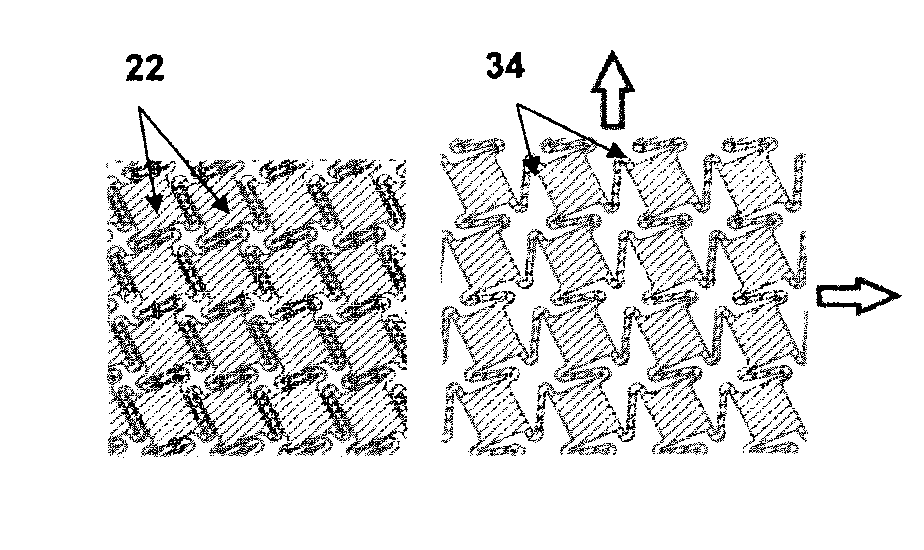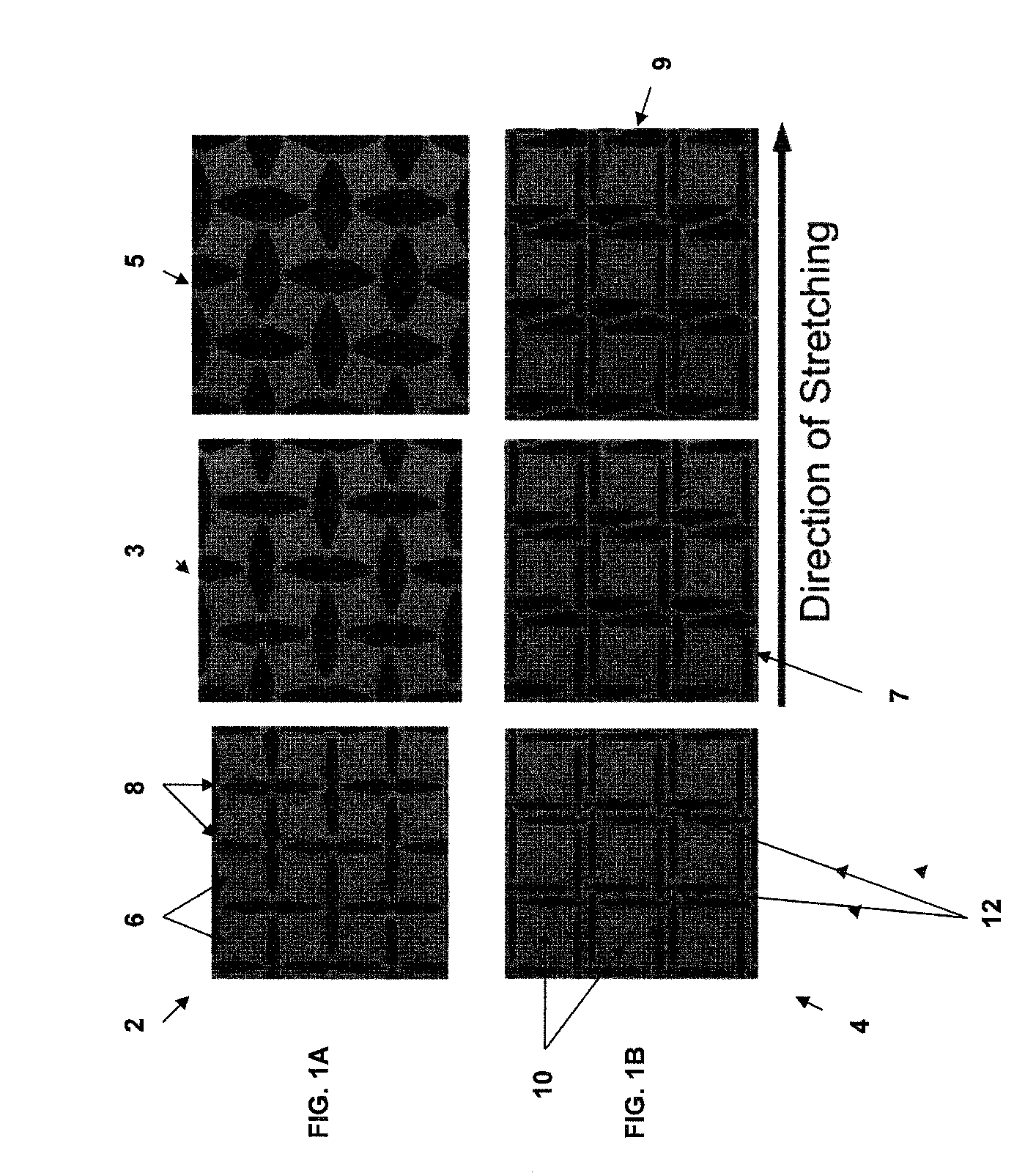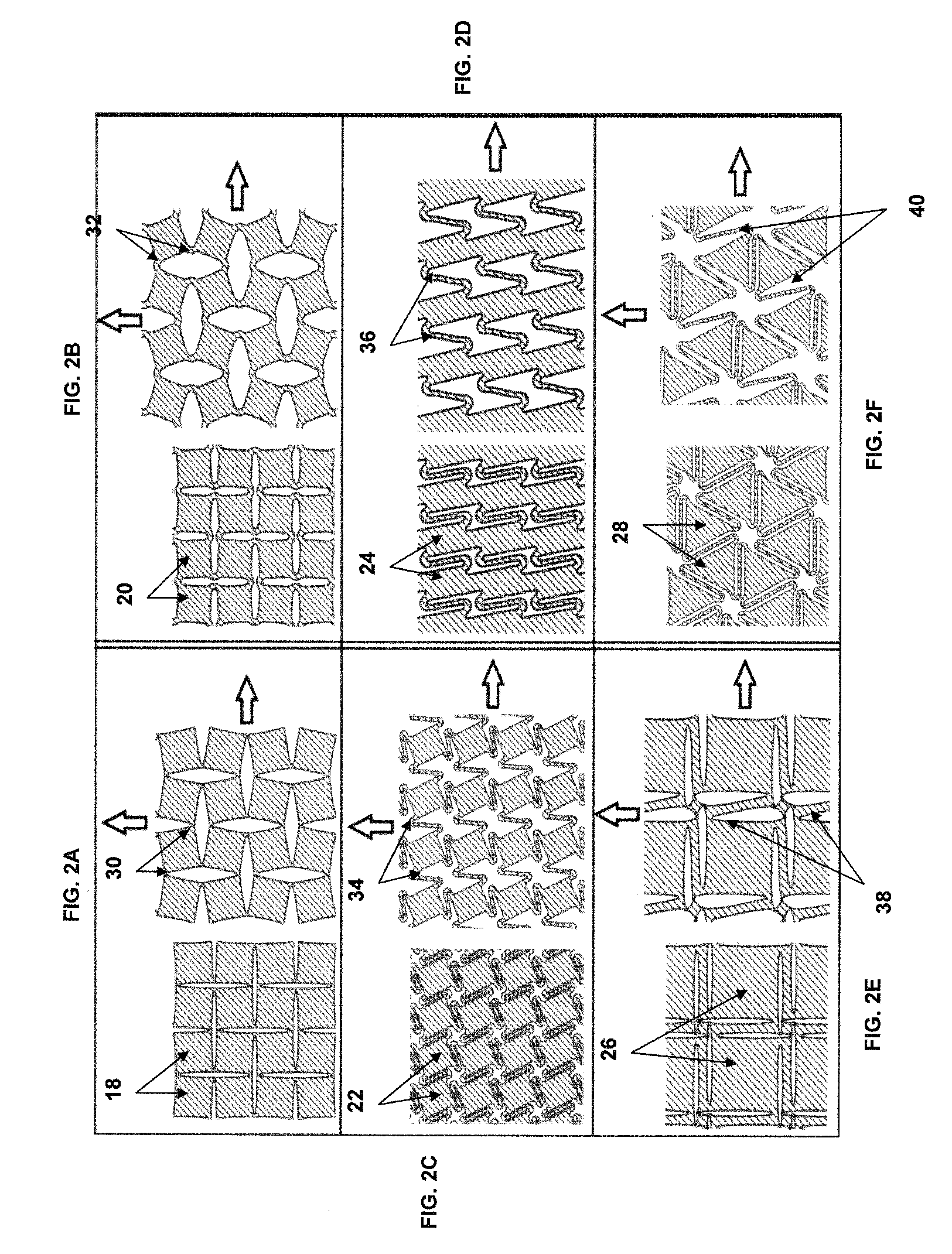Structured material substrates for flexible, stretchable electronics
a technology of structural materials and electronics, applied in the direction of dielectric characteristics, semiconductor/solid-state device details, transportation and packaging, etc., can solve the problems of not fully achieving the desired flexibility and stretchability, introducing additional manufacturing/assembly challenges and costs, and neither approach has yet provided a large-scale commercial flexible/stretchable electronic technology
- Summary
- Abstract
- Description
- Claims
- Application Information
AI Technical Summary
Benefits of technology
Problems solved by technology
Method used
Image
Examples
Embodiment Construction
[0023]The invention provides a design for flexible stretchable and conformable substrates for integrated devices and method to manufacture stretchable, flexible and conformable integrated devices, including electronics, photovoltaics, antennas, and other integrated devices. A complete integrated device consists of a base substrate, with a system of conductive interconnects or “traces”, housing the necessary components (electronic components for an electronic device, photovoltaic cells for a photovoltaic device, etc.). The base substrate with the conductive interconnects will hereafter be referred to as a printed circuit board or PCB. The electronic (or photovoltaic, or sensor, etc.) components will hereafter be referred to as simply components or chips.
[0024]The integrated device includes a flexible structured material substrate (SMS) having a patterned conformation that allows the substrate to experience local strains lower than the macroscopic strain imposed on the integrated devi...
PUM
| Property | Measurement | Unit |
|---|---|---|
| flexible | aaaaa | aaaaa |
| stretchable | aaaaa | aaaaa |
| stretchability | aaaaa | aaaaa |
Abstract
Description
Claims
Application Information
 Login to View More
Login to View More - R&D
- Intellectual Property
- Life Sciences
- Materials
- Tech Scout
- Unparalleled Data Quality
- Higher Quality Content
- 60% Fewer Hallucinations
Browse by: Latest US Patents, China's latest patents, Technical Efficacy Thesaurus, Application Domain, Technology Topic, Popular Technical Reports.
© 2025 PatSnap. All rights reserved.Legal|Privacy policy|Modern Slavery Act Transparency Statement|Sitemap|About US| Contact US: help@patsnap.com



